Bangladesh Hindu Genocide: The Murky World of Silence
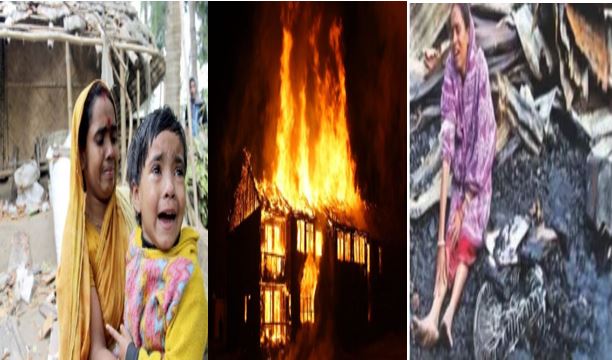

While there is no shortage of historical scholars, sages, and teachers in Hinduism, but there is no firm date of origin for Hinduism, either. The earliest known sacred texts of Hinduism, the Vedas, date back to at least 4000 BCE, but some date them back even further, to 8000-6000 BCE. Unlike the Abrahamic religions of Islam, Judaism, and Christianity which is considered to have a historical founder like Muhammad, Abraham, and Jesus, Hinduism (Sanatana Dharma) has descended directly from Almighty God (Bhagwan).
But it’s also a ghastly truth that Hindus are the only religious community who have experienced both historical and ongoing religious persecution and systematic violence, in the form of forced conversions, documented massacres, demolition, and desecration of temples, as well as the destruction of educational centers.
Although, in the past history has witnessed thousands of Hindu Genocide, but recent f Hindus Genocide in the past 100 years is
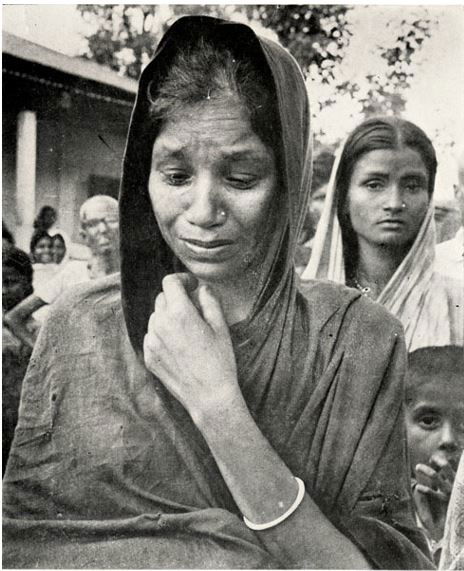
The pre-Independence era has witnessed a history of bloodshed against Hindus. The brutality against Hindus was a common phenomenon in then East Bengal (Today’s Bangladesh) because Hindus were a historically religious minority but at the time of Independence due to partition of the country, genocide against Hindus on the basis of religion was exemplary. Since 1947 the violence against Hindus in East Pakistan (now Bangladesh) is a continuous phenomenon and followed religiously by the majority of Muslims irrespective of political parties in Power.
History of innumerable incidence of atrocities against Hindus like killing, rape, slaughter, forcible annexation of properties, burning of houses and abduction are taking place and in a considerable number of cases, the violators are the cadres of various political parties irrespective of whether they are ruling or are in opposition. According to an estimation, more than 475 persons belonging to the minority community are migrating from Bangladesh daily[1].
After the 1947 genocide, Hindus were persecuted the most in 1971 due to which large-scale migration of Hindus to India took place. According to estimates, at the time of the Bangladesh Liberation War, almost 2.5 million Hindus were butchered in one of the biggest genocides of the century.
“Kill three million of them and the rest will eat out of our hands,” Pakistan’s military President Gen. Yahya Khan is said to have ordered before the start of the brutal ‘Operation Searchlight’ on the night of March 25, 1971[1].
As per the article in ‘Time Magazine‘ dated 2 August 1971, stated: “The Hindus, who account for three-fourths of the refugees and a majority of the dead, have borne the brunt of the Muslim military hatred“.
According to BBC “Official estimates say more than three million were killed and tens of thousands of women raped during the Bangladesh war of independence. The minority Hindu community suffered disproportionately because some Pakistanis blamed them for Bangladesh's secession”.

Bangladesh was born on December 16th, 1971 when the Pakistan Army signed an “Instrument of Surrender” to the Indian Army.
Bangladesh was premised on a secular and democratic ethos as “Paragraph II of the preamble of the first constitution of Bangladesh which was adopted on November 4, 1972, accepted “Nationalism”, “Socialism”, “Democracy” and “Secularism” as state principles. But “soon after its birth, the political history and politics of Bangladesh found itself within the twists and turns of majoritarian politics”.
Through the Eighth Amendment to the constitution on 7 June 1988, Islam was declared as the state religion of Bangladesh (Article 2 Clause A) with the provision that other religions may be practiced in peace and harmony. “The above changes were brought about by successive political regimes to consolidate their power base by appealing to the sentiments of the majority. This not only transformed the political identity of the state but also created internal polarization”[2].
Since the change in the constitution, the minority community especially Hindu’s faces discrimination and continuous atrocities, violence, and killings. It has been proven that the political process and the political parties were a major source of discrimination against minorities.
Islam is the state religion of Bangladesh and the government is run by the four-party alliance and out of these four is one fundamentalist Islamic party called Jamaat-e-Islam, which stood hostile to the cause of independence of Bangladesh. In 50 years of its creation, two of the basic principles of the war of Independence, Secularism and Democracy-have been very adversely affected and had been witnessed many times recently by attacks on Hindu Temples and the Killing of innocent Hindus. As Secularism was dropped from the constitution and Islam was made the religion of the land, the minorities have turned into second-grade citizens.
Out of 50 years of its history, Bangladesh was under military rule for a good period in its initial period. The main and major partner party of the present government was also born under the initiative and design of the first military ruler of Bangladesh. Bangladesh Awami League (born 50 years ago), the political party that led the war of liberation ruled the country for 5 years (1996-2001) and is also in power since 2009.[2]
Ever since the birth of Bangladesh, the Hindu population has declined considerably.

Bangladesh has a total land of 147570 square kilometers with 165 million populations (as per the 2011 census). Out of these 91% (150 million are Muslims), 8.5% (13 million Hindus), and others constitute Buddhists, Christians, and ethnic people belonging to 45 aboriginal communities.
As per the latest reports Poverty declined from 43.5 percent in 1991 to 14.3 percent in 2016, based on the international poverty line of $1.90 a day (using 2011 Purchasing Power Parity exchange rate)[4].
Many Bangladeshi scholars like Salam Azad who was Executive Director, Amity for Peace, Bangladesh hold the view that Islam became the state religion in Bangladesh. Since 1982, a concept diametrically opposed to the slogans and principles on the basis of which the Bangladesh freedom movement started i.e., “Secularism” and “Democracy”. Consequently, the minorities particularly Hindus, have been marginalized to the extent that they became “Unwanted Low-Grade” Citizens in their own country.
In almost all of the cases, the Hindus are not getting justice from the judiciary. While depicting the plight of Hindus and exemplifying the nature of injustice, Azad says “The writ petitions made by ASK, an NGO to safeguard minority rights had not been responded to. Democracy without secularism has been negatively acting over the freedom of the minority communities. Some NGOs stood as shelter for the minorities but that too has been obstructed by creating grouping among NGOs. Rights of the citizens belonging to the minority communities are thus curtailed in manifold ways”.
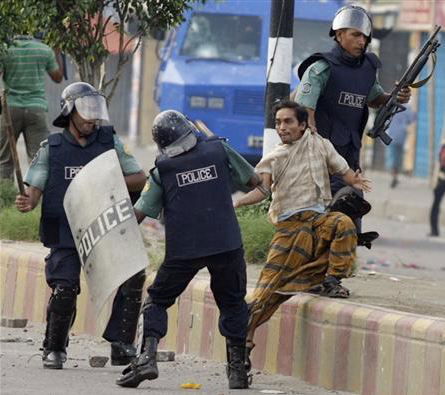
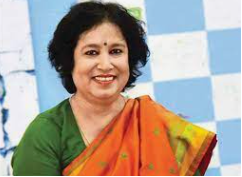
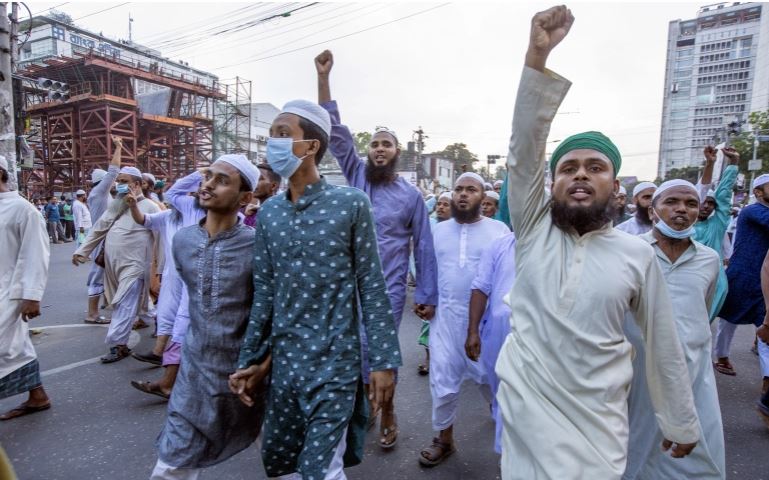
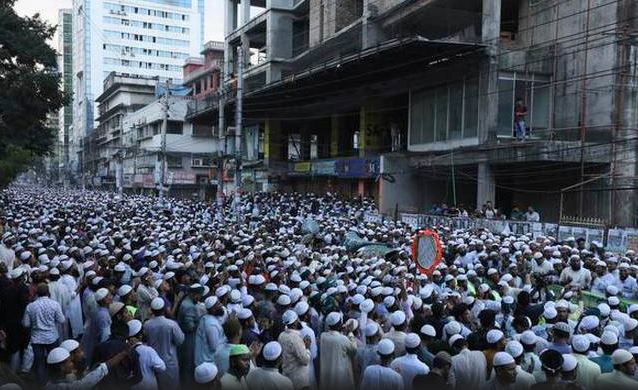

In October 2006, the United States Commission on International Religious Freedom published a report titled 'Policy Focus on Bangladesh', which said that since its last election, "Bangladesh has experienced growing violence by religious extremists, intensifying concerns expressed by the countries religious minorities". The report further stated that "Hindus are particularly vulnerable in a period of rising violence and extremism, whether motivated by religious, political, or criminal factors, or some combination". The report noted that "Hindus had multiple disadvantages against them in Bangladesh, such as perceptions of dual loyalty with respect to India and religious beliefs that are not tolerated by the politically dominant Islamic Fundamentalists of the Bangladesh Nationalist Party". Violence against Hindus has taken place "in order to encourage them to flee in order to seize their property".
The question is “Why the World Leaders and All Human Rights Organisations behaved as ‘Sitting Ducks’ and let the religious persecution of Bangladeshi Hindus to happen, Which is still going on”?
[1] The Forgotten Genocide: “1971 Bangladesh Hindus Genocide” – Kreately
[2] Violence Against Minority Hindus in Bangladesh: An Analysis | Vivekananda International Foundation (vifindia.org)
[3] https://www2.ohchr.org/english/issues/minorities/docs/amity%20for%20peace.doc.
[4] Bangladesh Overview: Development news, research, data | World Bank
[5] MAR | Data | Chronology for Hindus in Bangladesh (umd.edu)
DISCLAIMER: The author is solely responsible for the views expressed in this article. The author carries the responsibility for citing and/or licensing of images utilized within the text.
